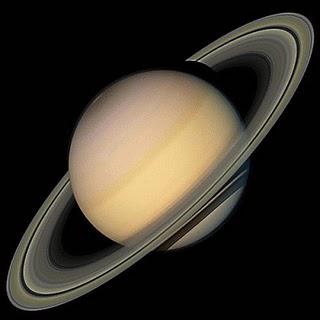Saturn is characterized by its rings, which are easily visible through a small telescope. They have been known since the time when Galileo Galilei first used a telescope to astronomical purposes. Rings are annotated letters of the alphabet, in order of discovery. Consist of silicate rocks, iron oxides and ice. It stretches from the 6 630 km to 120 700 km above Saturn's equator. Through a telescope are best seen rings A, B and C. The fissure between the two most prominent rings (A and B) is called Cassini division, a much less pronounced cracks at the outer edge of the A-ring is named Encke gap. The cracks are actually orbits with unfavorable resonance in relation to Saturn's satellites, so they have the same origin as the Kirkwood area in the asteroid belt.

Jupiter's rings are mainly composed of micro-meter dust particles and extends all the way to the planet's surface. Closest to Jupiter is the Halo ring, a wide, about 20 000 km, which is shaped like a torus. On Halo continues 7 000 km wide main ring. Inside the ring are also Galilean moons Metis and Adrastea. Amalthea and Thebe are the sources of material for a very rare Amalthea Gossamer and Thebe Gossamer ring that continues to the main ring.
Neptune's rings are Galle, LaVerrier, Lassell, Arago, one unnamed, and Adams, which contains 5 arcs: Courage, Liberté, Egalité 1 and 2 and Fraternité. Albedo of the rings is very small: between 0.015 and 0.04 and are less pronounced than Saturn's and Uranus rings.
Uranus' rings are 1986U2R, 6, 5, 4, Alpha, Beta, Eta, Gamma, Delta, Lambda (formerly 1986U1R) and Epsilon. Most of the Rings is just a few kilometers wide, except the ring 1986U2R which is 2500 km wide. Albedo of the rings is only 0.03. The rings are elliptical, especially outside, and do not look like complete as Saturn's rings. Particle size ranged from dust to the 10-meter boulders.
